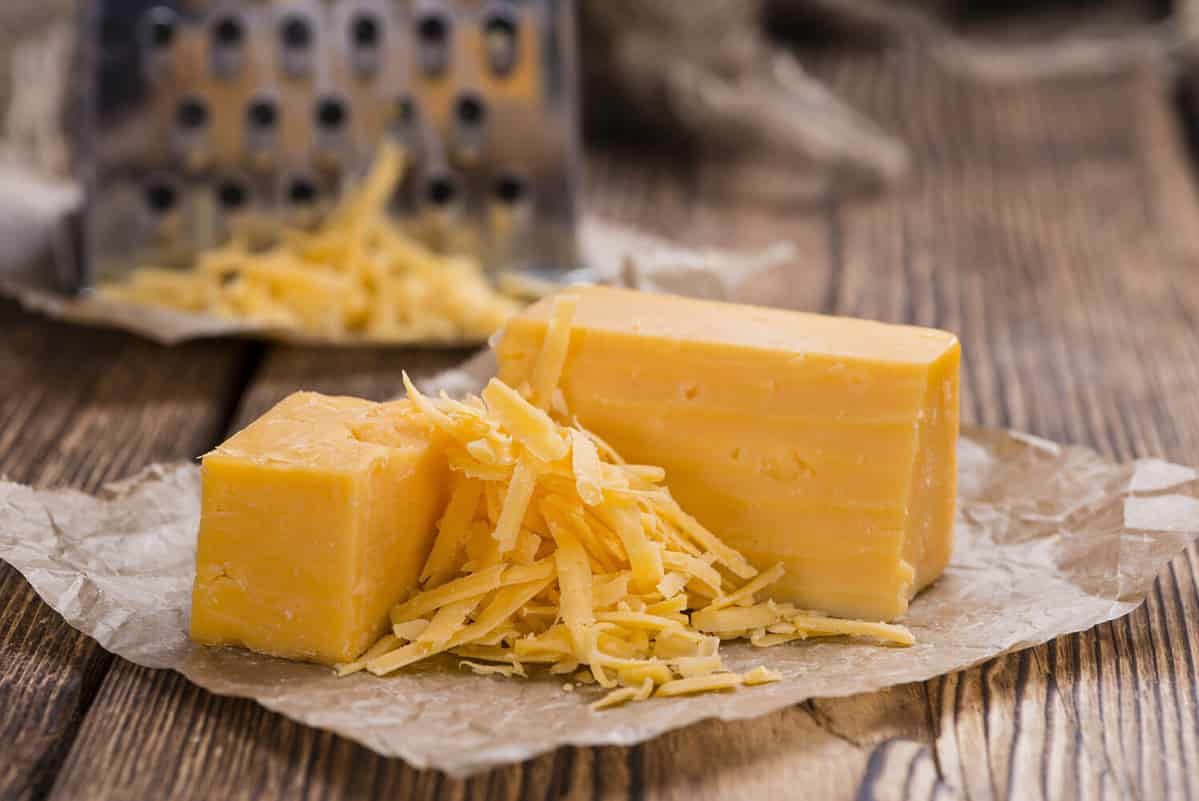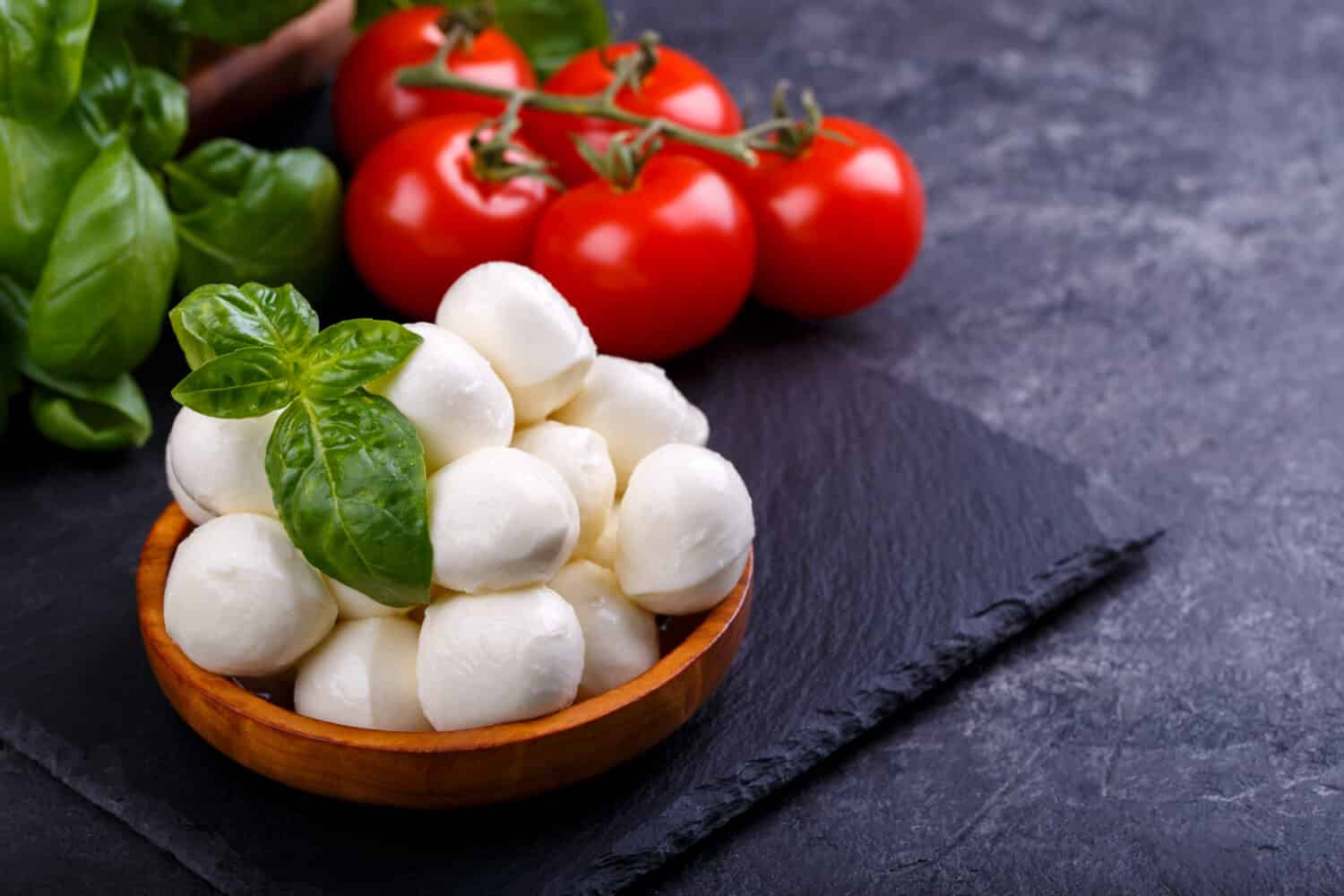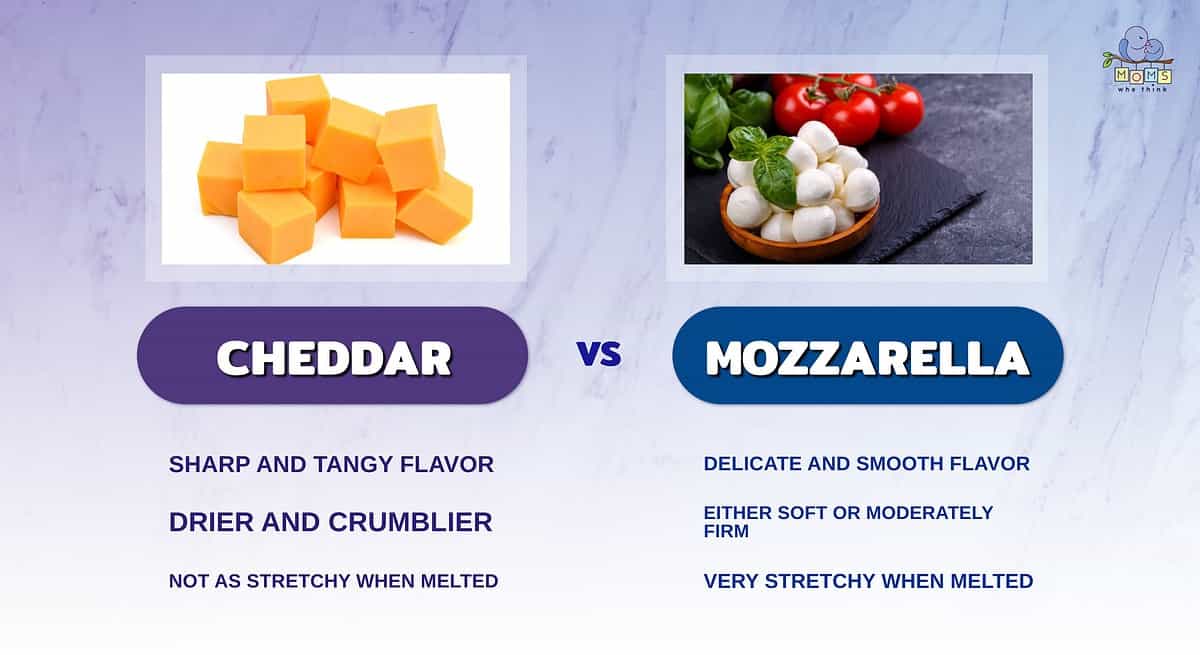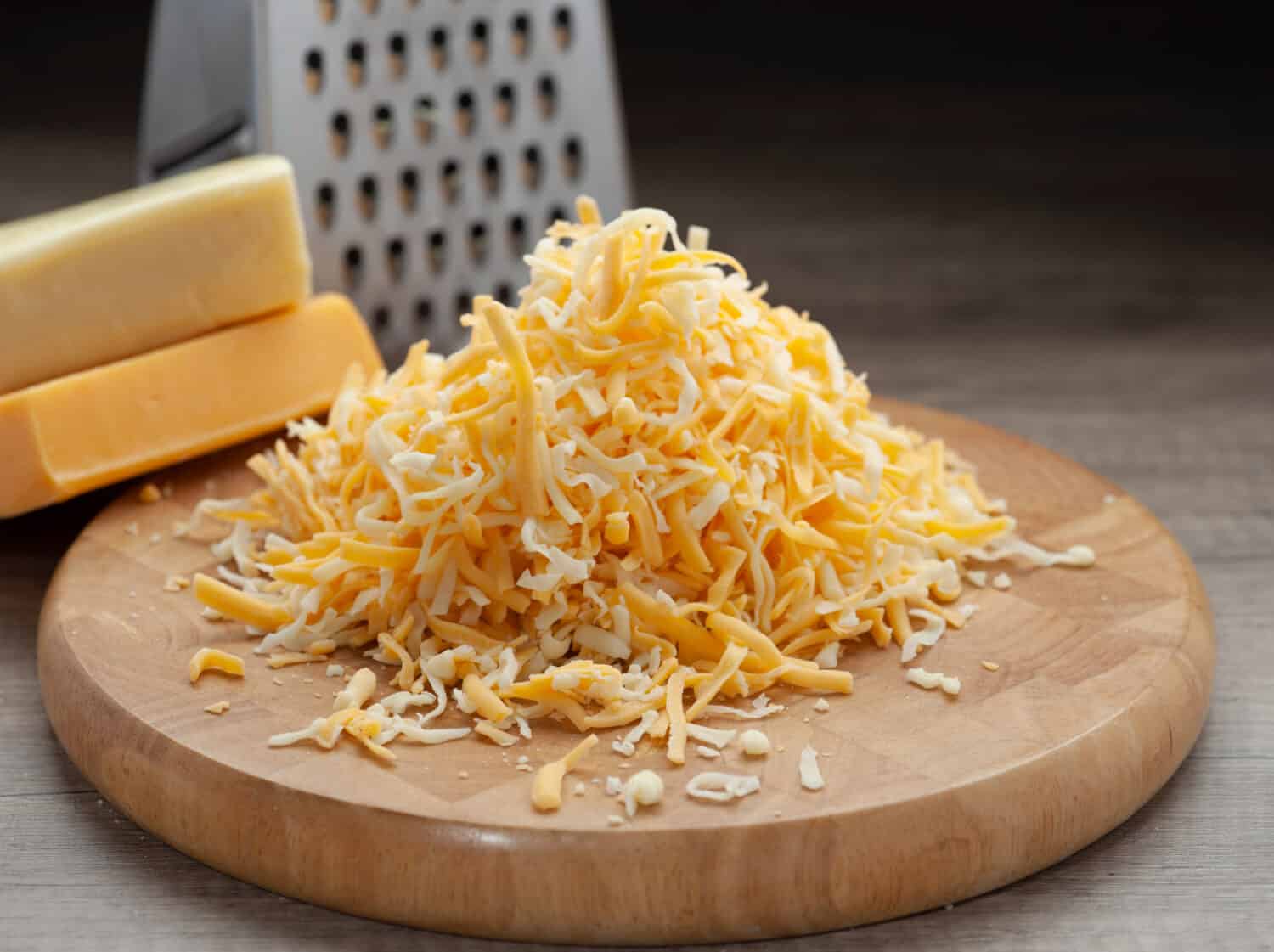For many families, cheese is a staple ingredient in everything from sandwiches to pasta dishes. But when it comes to choosing between cheddar and mozzarella, how do you know which cheese is the best option for your next recipe?
In this post, we'll explore the unique characteristics of both cheddar and mozzarella cheese, including taste, texture, and versatility in cooking. Whether you're looking for the sharp tanginess of cheddar or the creamy smoothness of mozzarella, let's uncover which cheese is best for your next meal.
- The must-have convenient reference guide for every home cook!
- Includes more than 8,000 substitutions for ingredients, cookware, and techniques.
- Save time and money on by avoiding trips to grab that "missing" ingredient you don't really need.
Cheddar Cheese vs. Mozzarella: What Is the Difference?
Cheddar and mozzarella are two popular ingredients in many recipes, but they are incredibly different from each other. For example, cheddar can range from mild to sharp in flavor and has a dry, crumbly texture. Mozzarella, on the other hand, is milder, creamy, and smooth.
Let's take a closer look at what sets these cheeses apart.
What Is Cheddar Cheese?

Cheddar is known for its dry and crumbly appearance.
©HandmadePictures/Shutterstock.com
Cheddar is a semi-hard cheese that's made from cow's milk. It originates from England, has a slightly crumbly texture, and can have a sharp flavor depending on how long it has been left to age.
Origin
Cheddar cheese originates from the town of Cheddar in Somerset, England dating back as far as the 12th century. As the production process was enhanced over time, techniques were developed for controlling the temperature and acidity of the milk to produce consistent and high-quality cheese. Soon after, cheddar cheese was exported to other countries.
Cheddar cheese is now one of the most popular cheeses across the world. Large cheese factories have been created to meet the growing demand and numerous varieties of this sharp, tangy cheese.
Flavor
As mentioned, cheddar cheese has a distinct, tangy flavor that becomes sharper and more complex as it ages. Fresher forms of cheddar cheese are milder, with a slight buttery flavor while aged versions become more distinct in flavoring.
Texture and Appearance
Cheddar cheese can range in color from pale yellow to off-white, though, some manufacturers add annatto coloring to give it its signature golden hue. Cheddar is a somewhat crumbly cheese and has a much drier consistency due to its aging and manufacturing process.
How Cheddar Cheese Is Made
Cheddar cheese begins its production process like most cheeses: By adding rennet to milk in order to create curdles. The curds are then cut into pieces, pressed, and continually flipped to remove as much liquid (or whey) as possible. What's left is dense, dry, and somewhat crumbly cheddar cheese. This process is unique enough that it's been coined, “cheddaring.”
Cheddar also has a longer aging period than most cheeses. Mild and young varieties of cheddar are aged two to three months. Extra sharp versions are left to age for at least a year and sometimes longer.
Popular Uses
Cheddar cheese is extremely versatile. While it can be used on sandwiches, burgers, macaroni and cheese, and soups, it's also popular for snacking and pairs well with fruits, nuts, and crackers.
It's also important to note that the pre-shredded forms of cheddar cheese typically found in your local grocery store include cornstarch to prevent clumping. If you're looking for a stronger flavor and a more creamy melted version, try shredding a block of cheddar yourself.
What is Mozzarella?

Fresh mozzarella is typically formed into balls like these.
©Lana_M/Shutterstock.com
Mozzarella is a semi-soft, white, and mild cheese that originated in Italy. It is traditionally made from milk of water buffalos and is traditionally used in Italian cuisine, especially in pizza and pasta dishes.
Similar to cheddar, there are different versions of mozzarella depending on how long it's been left to age. Fresh mozzarella, also known as fior di latte, is made from cow's milk and has a high moisture content. Low-moisture mozzarella, on the other hand, is made from partially skimmed milk and has a firmer texture and a more tangy flavor than fresh mozzarella.
Origin
Mozzarella cheese originates from Southern Italy in the regions of Campania, Basilicata, and Puglia dating back to the 12th century. The word “mozzarella” is derived from the Italian verb mozzare, which means “to cut off” or “to separate.” This derives from mozzarella's unique production process that involves kneading and stretching the curds until they form the cheese's unique shape.
As mentioned, mozzarella was originally made from the milk of a water buffalo, called mozzarella di bufala. As the cheese has grown in popularity, however, it's now made mostly from cow's milk.
Flavor
While cheddar has a sharp and tangy flavor, fresh mozzarella has a delicate, slightly sweet flavor. Aged or low-moisture mozzarella, however, tends to have a more intense flavoring. The flavor of this cheese also depends on what kind of milk was used to make it. Traditional mozzarella made from water buffalo tends to be more rich and creamy than mozzarella made from cow's milk that has a delicate and milky flavor.
Texture and Appearance
Mozzarella is known for its semi-soft texture and white appearance. This cheese tends to be milder than cheddar as well.
The texture of mozzarella again depends on whether it's fresh or aged. Fresh mozzarella has a creamy and soft texture. Low-moisture mozzarella has a firmer texture that can sometimes become chewy when melted.
How Mozzarella Is Made?
Whether water buffalo or cow's milk is used, the production process of mozzarella remains the same. And, while cheddar has its signature “cheddaring” process, mozzarella has its own process termed, pasta filata according to cheese.com.
Once curds develop, they are heated in hot water or whey until their texture becomes stringy or elastic. The curds are then stretched, kneaded until smooth, and then shaped into balls. Unlike cheddar that's left to age for several months, mozzarella is made fresh and ready to eat within a few hours.
Popular Uses
Like cheddar, mozzarella is highly versatile and can be used in a number of dishes. You're probably familiar with it as a topping on pizza or pasta, but this cheese can also be used in salads, sandwiches, and inside meat dishes. Fresh mozzarella is also delicious on bruschetta or paired with tomato.
Can You Substitute Cheddar with Mozzarella?
While both cheddar and mozzarella are delicious cheeses, they do not make the best substitutes for each other.
Mozzarella is known for its mild, milky flavor and stretchy, elastic texture when melted. Cheddar, on the other hand, has a much sharper flavor and firmer texture. Swapping one for the other in your dish could significantly impact the overall flavor and texture.
- The must-have convenient reference guide for every home cook!
- Includes more than 8,000 substitutions for ingredients, cookware, and techniques.
- Save time and money on by avoiding trips to grab that "missing" ingredient you don't really need.
Best Substitutes for Cheddar
If you're looking for an appropriate substitute for cheddar's tangy flavor and dry consistency, give one of these options a try:
- Colby, which is also a semi-soft cheese that has a similar appearance and texture to cheddar.
- Monterey Jack is a cheese that melts like cheddar, making it a great replacement for nachos and quesadillas.
- Aged gouda, which has a similar tangy and sharpness to aged cheddar.
Best Substitutes for Mozzarella
In a pinch and need a quick replacement for mozzarella? Here are a few other cheeses to try:
- Provolone, which is also an Italian cheese that melts well and is a good replacement in sandwiches and pizza.
- Edam is a Dutch cheese that has a similar firm but slightly springy texture to mozzarella.
- Fontina is another Italian cheese that also melts well and can be used in lasagna and baked pasta.
- Burrata is a unique cheese that has a creamy center with an outer shell made of mozzarella.
Cheddar Cheese Recipes
PrintPulled Smoky Chicken Sandwich with Cheddar
- Total Time: 25 minutes
Ingredients
- 4 cups shredded or cubed cooked chicken (such as rotisserie chicken or leftover roasted or grilled chicken)
- 1 cup chili sauce
- 1 teaspoon liquid smoke
- 4 sandwich rolls (such as hamburger buns)
- 4 (1-ounce) slices Cheddar cheese, mild or sharp
Instructions
- Preheat the broiler.
- Combine the chicken, chili sauce, and liquid smoke in a medium saucepan over medium heat.
- Cook for 5 minutes, until liquid is absorbed.
- Arrange the chicken on the bottom half of the rolls and top with cheese.
- Place the sandwiches under the broiler and cook for 1 minute, until the cheese melts.
- Top with the top half of the rolls and serve.
- Prep Time: 10 minutes
- Cook Time: 15 minutes
Mozzarella Recipes
Final Thoughts

- Cheddar cheese is not nearly as elastic when melted, so mozzarella is preferred when a good cheese pull is desired.
- Mozzarella has a smooth, creamy flavor, while cheddar has a sharp and powerful flavor.
- Cheddar cheese tends to be dry and crumbly, while mozzarella can be either soft and chewy or moderately firm.
In the end, choosing between cheddar and mozzarella cheese really depends on whether you need the tanginess of cheddar or the soft and creamy flavor of mozzarella. Both cheeses have their own unique flavor profiles, textures, and melting characteristics that make them ideal for different dishes. Either one will be a win in your next recipe!
The image featured at the top of this post is ©Robert Stedman Pte Ltd/Shutterstock.com


